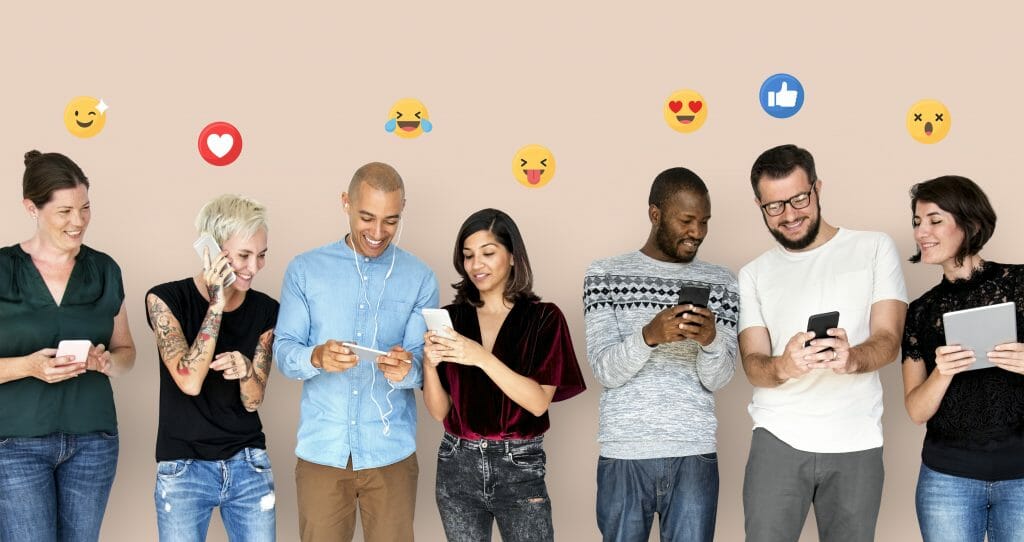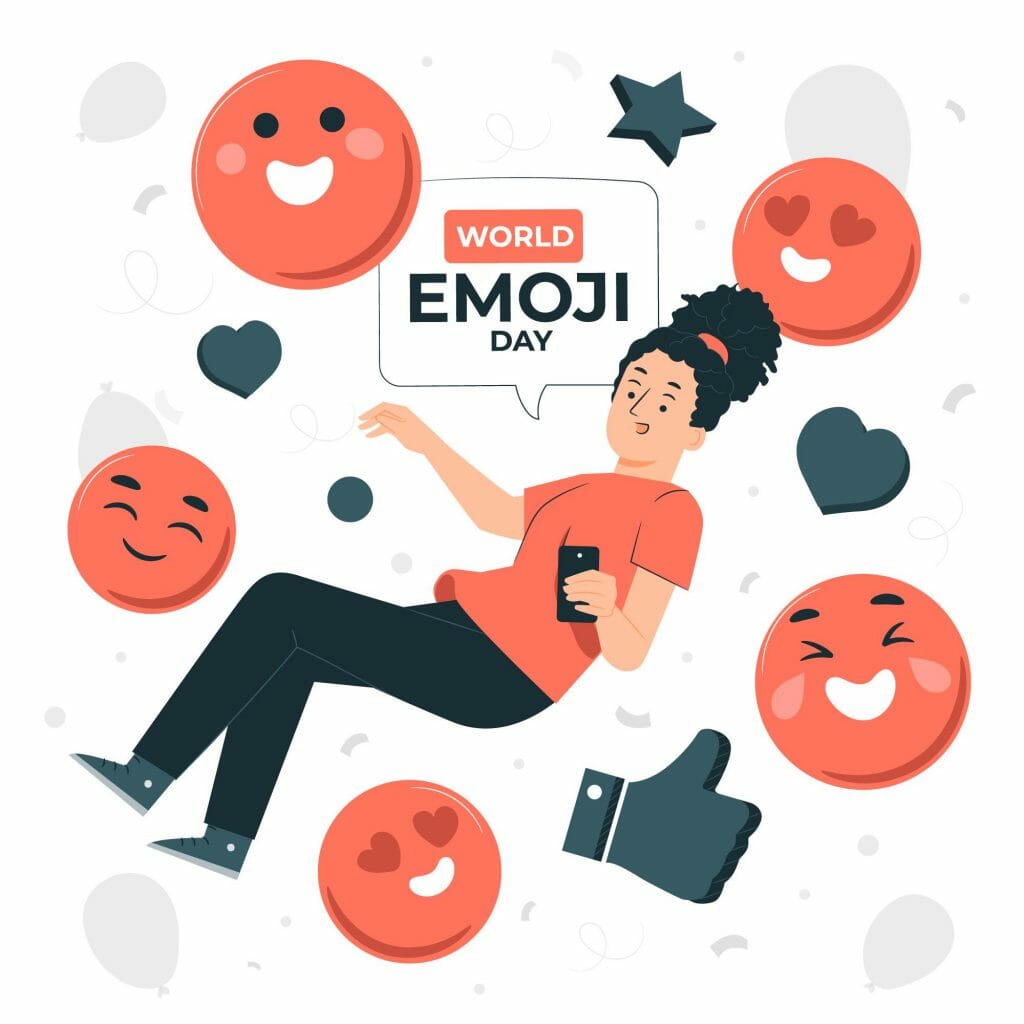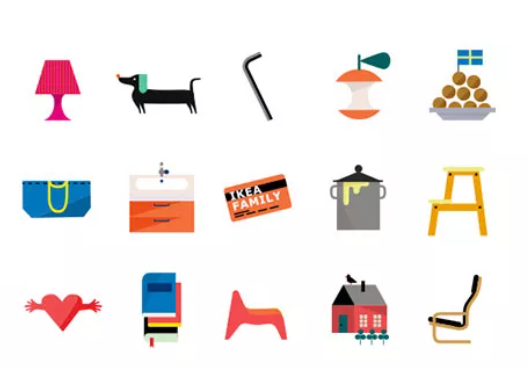Even the older ones amongst us have probably made a smiley-face emoji (technically, emoticon) by combining the: - and ) keys, to form 🙂 (or as modern software automatically converts it, ?). You might not recognize the term, but emoji have been a part of our lives since the late 1990s, and emoticons even longer.
Although emoji are often seen as symbolizing the differences between the generations, most people from Baby Boomers to Generation Alpha have used them at some time, even if they have restricted themselves to that simple smiley-face, and its cousin, 🙁 or ☹, the sad face.
They have a real purpose, however, and it isn’t just to break the page up with little pictures. They are often used as a surrogate for emotion and help get around the problems humans often encounter with communication that’s not face-to-face.
As a fun experiment, we have included a real time emoji tracker, which tracks all of the most popular emojis being used on Twitter in Real time
What are Emojis, the Most Popular Emojis and How they Help Boost Social:
Early Emoticons
Those early emoji were really emoticons. Emoticons are pictorial icons made up from a combination of punctuation marks, letters, and numbers – i.e., made up of existing text characters. The term “emoticon” is a combination of the words “emotional icon.”

Source: freepik.com
Back in the 90s, you only had keyboard characters you could use to show emotion in a text world. It didn’t take long in the early days of texting (or SMSing if that is what people call it in your country), for people to discover how hard it is to express emotion in text. It can be extremely easy to misunderstand the intent of a text or written message without any emotional cues.
Emoticons go back even further. In 1982 a joke about a fake mercury spill went wrong at Carnegie Mellon University. It caused massive confusion on the university message boards, with people unaware that the messages were joking.
As a result, Dr. Scott E. Fahlman suggested that jokes be marked by two sets of characters: the smiley face 🙂 and the frowning face :-(. These emoticons quickly became popular on the internet, where most communication was still text-based.
Before long, additional emoticons became popular, such as the winking face 😉 and the look of surprise :-O
Of course, because of the limitations of a traditional keyboard, you must look at most of these emoticons sideways to understand their meaning. There is the occasional emoticon that you should read right-ways up, though, for example, somebody invented an emoticon to represent the late Beatle, John Lennon, //0‑0\\
The Arrival of Emoji
Like emoticon, the word emoji is a portmanteau – a combination of two words, in this case, the Japanese words for “picture” (e) and “character” (moji). Emoji are literally “picture characters” in English. They were invented in 1999 by Japanese artist, Shigetaka Kurita, initially intended for Japanese users.
While emoticons are made from ordinary keyboard characters, emoji are pictographs – character-sized pictures and drawings. Clearly, ? looks much better than 🙂 on modern screens that have graphical capabilities.
Kurita wanted to design an interface which could convey information graphically, rather than having to use words. His original set included 176 emoji, mainly symbols presenting information, e.g., he included emoji of the sun, clouds, an umbrella, and a snowman to indicate the weather. He did add a few characters for expressing emotion, for example, he added the heart symbol in the first emoji set. Interestingly, this set didn’t include any faces, smiling or otherwise, because they did not fit in with Kurita’s purpose for creating emoji.
Emoji rapidly became popular in Japan, and competing mobile companies started creating their own sets.
The early emoji were simple and inspired by manga art and kanji characters. They have become much more sophisticated over the last 20 years.
Emoji Spread Across the World
Most of our main computing/telephone/software systems now include their manufacturer’s version of popular emoji. Apple even included a (hidden) emoji keyboard in its first iPhone in 2007.
Google also recognized the popularity of emoji in 2007. Their internationalization team petitioned to get emoji recognized by the Unicode Consortium. This is the organization that ensures text standardization across all computers and devices. Unicode gives a number to each character/symbol you can type on an electronic device. Obviously, it includes all the letters and numbers that you use in English. Over time it has added the variants you see in other languages, including all the characters used in Asian and Arabic languages. It also includes all the special characters and symbols you can include in text (e.g., all those symbols you can insert into a document, including characters in Wingdings, Webdings, and the like).
Luckily, although each major manufacturer has its own emoji set, all modern platforms can translate emoji from other devices, thanks to them following the Unicode standard. Unicode’s most recent version contains almost 50,000 characters, giving plenty of flexibility for including any emoji variants.
If your device didn’t follow Unicode’s standard, you would have difficulty reading documents created on other types of devices. Because Microsoft, Google, Apple, Samsung and all the rest of the tech companies recognize Unicode, they can all read characters and emoji sent from opposition devices.
Unicode Indexes Emoji
Ultimately, Unicode created a standard (Unicode® Technical Standard #51) which formally defines the structure of Unicode emoji characters and sequences. It provides all the necessary data to support that structure, such as which characters are official emoji, which emoji should be displayed by default with a text style versus an emoji style, and which can be displayed with a variety of skin tones. They continually update the standard, which is currently on Revision 12. Unicode 13.0 is scheduled for release in March 2020.
The Most Popular Emoji
We have recently built a tool that shows you the most popular emoji in social media now. The tool tracks emoji use across social media in real time.
The emoji obviously change positions over time, but the most popular emoji at the time of writing were:
- Face with Tears of Joy ? (Unified ID - 1F602, Shorthand - :joy: )
- Heavy Black Heart ❤️ (Unified ID - 2764, Shorthand - :heart: )
- Black Universal Recycling Symbol ♻️ (Unified ID – 267B, Shorthand - :recycle: )
- Smiling Face with Heart-shaped Eyes ? (Unified ID – 1F60D, Shorthand - :heart_eyes: )
- Black Heart Suit ♥️ (Unified ID – 2665, Shorthand - :hearts: )
- Loudly Crying Face ? (Unified ID – 1F62D, Shorthand - :sobs: )
- Smiling Face with Smiling Eyes ? (Unified ID – 1F60A, Shorthand - :blush: )
- Unamused Face ? (Unified ID – 1F612, Shorthand - :unamused: )
- Two Hearts ?(Unified ID – 1F495, Shorthand - :two_hearts: )
- Face Throwing a Kiss ? (Unified ID – 1F618, Shorthand - :kissing_heart: )
It’s notable that most of the top slots belong to faces and hearts. The exact leaders may change over time, but the most popular sentiments don’t seem to alter much. The reason why some have the word “black” in their name but are colored, is because their name predates color emoji.
July 17 is World Emoji Day
Each year, July 17 is now celebrated as World Emoji Day. Indeed, it is the only day to have its own emoji (apart from obvious holidays, such as Christmas).
World Emoji Day was created by Emojipedia founder Jeremy Burge in 2014. You can find nearly every emoji in existence on Emojipedia.

Source: freepik.com
World Emoji Day aims to promote the use of emojis and spread the enjoyment that they bring. Some people hold parties and events to celebrate the day, others like to get creative with emoji art online.
Various companies have chosen World Emoji Day to launch emoji-related promotions each year. Apple chose the day to introduce its new emojis to the world in 2018. In 2017 the Empire State Building was lit “emoji yellow.”
Using Emoji on Social
Emoji provide a valuable purpose on social media because they make it easier to express emotion in your posts. People process visual information 60,000 times faster than plain text, making emoji a way you can instantly communicate your intended emotions with just a glance.
Facebook realized the importance of this a couple of years ago, when they changed their like button, to a selection of six additional emoji you can select, ensuring you display your real emotion. The previous Like button was inappropriate for some messages, for instance when clicking on a post announcing that somebody had died.
The use of emoji increases engagement on social posts. Larry Kim found that using emoji in a tweet increased engagement by 25.4% compared to an identical post without the emoji.
The biggest mistake that people make with emoji is picking the wrong emoji for the situation., It’s vital that you know what an emoji means before you use it. Emojipedia can help with this. Context is critical when using emoji. The more formal the message, the less likely you should use emoji.
You should also think about the demographics of your audience before using emoji. They’re far more suitable for use in posts to Millennials than they are on messages you may send to Baby Boomers.
There is no reason why businesses can’t use emoji in their posts – it shows customers your human face. However, you shouldn’t use too many emoji that your customers mightn’t understand. As with all communication, you want your social media messages to be clear to potential customers.

Source: adweek.com
Some brands have created custom emoji keyboards, to represent the company’s image better. For instance, IKEA has created relevant houseware emoji where they don’t exist elsewhere. WWF created a custom emoji set of endangered animals.
You will want to look at the types of people following you first, but emoji are often valuable on social media to help your audience better understand the meaning behind your words.


